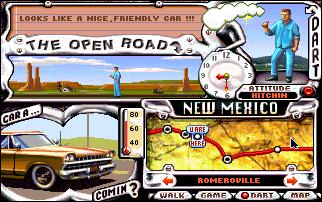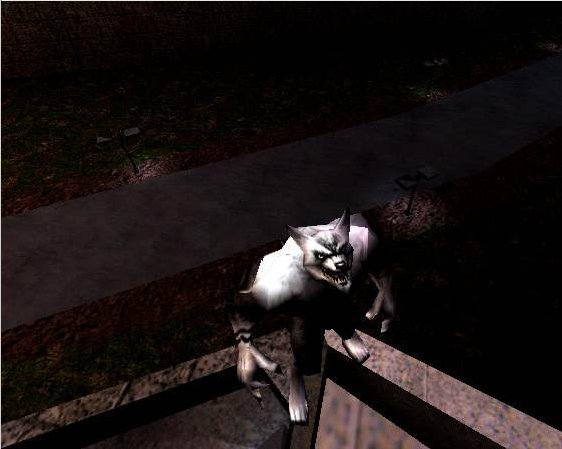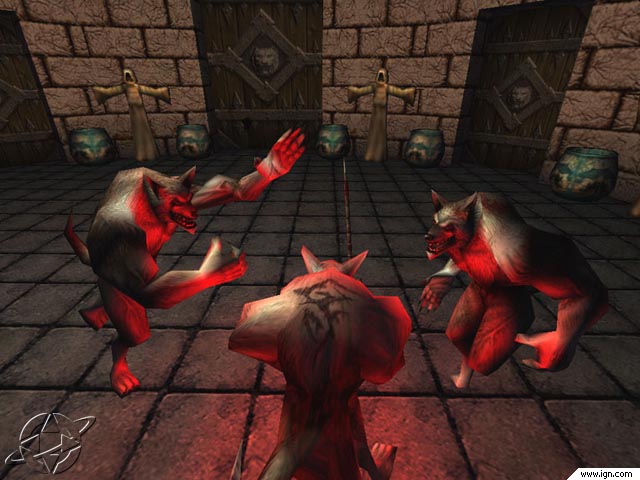Route 66 is a cancelled point and click adventure game that was in development in the early ‘90s by Disney Software/Buena Vista, initially planned to be released for 386 (or 286) PCs with 320×200 VGA cards. The game was formatted onto 2 or 3 floppy disks that would play on these computers. The team behind this lost game was composed of talented developers, artists, and designers, such as Darlene Waddington (game design), Jeff Hilbers (art and graphic design), Sue Chow (game design) and Jimmy Huey (programmer). At this time, Disney Software was just a small division of Disney Consumer Products, but they were working hard to create games based on new and existing IPs.
Route 66 was intended to be an interesting mix of adventure and survival gameplay. The main protagonist was a young man named Dart Stranger who was busy hitchhiking from St Louis to Santa Monica along Route 66, a world-famous series of highways in America. Dart’s grandfather (or another distant relative) had died in LA, and had supposedly left some much needed money to Dart. Since Dart lived back in Chicago, players had find a way to get to LA within a certain amount of time in order to be there for the reading of his will. The player would start the game with only a few dollars, not enough for a bus ticket, so the only way to reach Santa Monica was through hitchhiking on Route 66. Getting to Santa Monica alive was the main objective of the game.

Hitchhiking revolves heavily around the drivers who pick you up, and the development team wanted to focus on that aspect of it. There was an interesting gameplay mechanic where each of the drivers had a special personality and the player would have to figure out how to respond to them correctly while in the car. Some want to talk and tell jokes, hear your stories, or maybe they just want to remain quiet. Players could gauge how well they were doing by the driver’s expressions. If handled correctly, they’ll drive you to the next city. If you don’t, they would boot you on the street and force you to find another ride. Just like classic point and click adventures from the ‘90s (Monkey Island, Day of Tentacle, Full Throttle, Sam & Max, etc.), Route 66 was full of humor and weird characters that added charm and funny dialogue to the game.
While traveling on Route 66, Dart would reach several main cities, and the gameplay would become more like a side-scrolling exploration survival game. Players had to look for a place to stay and eat, and hopefully finding some money to survive until you arrive in Santa Monica. During the game, Dart would get good rides and bad rides, make good decisions and bad decisions, meet with good folks and crazy folks, get thrown in jail and beat up by cops, eat bad food, sleep in the rain, get robbed by fellow travelers, become sick and held in hospital, and so on and so forth. This was an original hitching simulation in which strange things could happen, including your own death, all depending on how much attention you pay to the NPC’s behavior.


The flow of all these gameplay segments was controlled by a simple but detailed decision tree, reminiscent of a “Choose Your Own Adventure” book. The team’s goal after all was to achieve some semblance of interactive fiction. Darlene and Sue were busy writing stories and lines for all these diverse eventualities, while Jeff was creating sprite artworks/animations and Jimmy created all the code that made the game run, coming up with a lot of inventive techniques and tools to overcome the restrictions of their target platform (such as a conversation editor tool). They were able to develop some nice playable demos for Route 66 and everybody at Disney Software liked them; all that was left for them to do to complete the game was keep creating new content.
Unfortunately, internal issues among Disney killed Route 66 before more content could be made. The business world became fascinated with “multi-media” and the new “CD Revolution” in 1992 and 1993. Disney’s management also fell into this hype-disease and suddenly Disney Software wasn’t just an uninteresting division of Disney Consumer Products anymore, but a potential cash cow. High-rank producers at Disney wanted a piece of the multi-media gaming pie and the new political environment in the company led to a lot of nasty fratricide among producers, all of whom were looking to improve the status of their own projects by killing somebody else’s. Even with a fun and interesting playable demo, Route 66 was doomed.
After Route 66 was cancelled along with other titles in development (“Jungle Cruise” and “Dog Eat Dog”), the team was fired. They tried to pitch these concepts to other companies, but were turned down time and time again. Luckily, Dog Eat Dog was greenlighted by Trilobyte, the studio founded in December 1990 by Graeme Devine and Rob Landeros (known for such games as The 7th Guest and The 11th Hour). The team was able to keep working on Dog Eat Dog, an original policemen simulator, until its second cancellation in mid/late ‘90s.
Thanks to Jeff and Chris for the contribution! Article edited by Ryan DePalma
Images:


